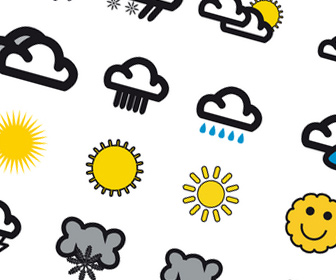
7 effective ways to end a lesson – because those last minutes matter!
 What have you learned today?
What have you learned today?
It goes without saying that you should never end a lesson by introducing something new, just to leave your students hanging till the next class. The best way to end a lesson is to give students some kind of review activity, so that they may see the progress they've made in just one lesson. One of the most common and easiest to implement is simply taking the last 5 minutes of class to ask your students, “What have you learned today?” Notice, here, that you’re not the one telling them what they’ve learned. They may give you a list of new words, or say they learned to speak about what they did in the past or what they will do in the future, etc... Students may pick up something they missed earlier. Also, it's important to speak in functional ways, for example not say they learned to use the “simple present” but rather that they learned to speak about their habits, schedules, and everyday activities.
 Performance correction and feedback
Performance correction and feedback
Right before the last 5 minutes of class you can have some sort of performance activity, for instance a role play. Usually we don’t correct students during the role play so we don’t interrupt the flow, but when they’re done you can end the class with corrections of words or expressions they used incorrectly; things they forgot to say, etc…and your students will go home with these corrections fresh on their minds. Students may also give their opinion or feedback on their classmates’ performance.
 60 seconds
60 seconds
Choose a few students and give each 60 seconds to speak about something you’ve covered that day: what they did yesterday if you worked on simple past; talk about Halloween, professions, or animals; older learners may even give a “how to” lesson; they may also summarize a story they heard, or place themselves in another person’s shoes, like a celebrity, profession, or even animal. But they must speak for a full minute. To motivate students to speak, you may choose to reward the student who says the most, or includes the most information, with a reward sticker.
 Write an email
Write an email
Ask students to imagine they have to write an email to a friend or family member and tell them what they did today in their ESL class. Students have a chance to summarize what they’ve learned in written form. This writing activity may be tailored to any topic. If you talked about farm animals, ask students to write about their favorite animal and why it’s their favorite. And the same goes for foods, sports, celebrities. Adult learners may write a business email with the new vocabulary they’ve learned.
 Say goodbye
Say goodbye
For very young ESL learners the best way to wrap up a lesson is with a goodbye song or saying goodbye to a puppet. The puppet may “ask” them questions about something they learned, and even give them a short “review” by asking, “What’s this?” or “What’s that?” or any other question or expression they may have learned. You may set aside this special time with the puppet every day at the end of the class, so children know what to expect, and even though they may be very young, they will still have this sense of closure.
 Tidying up
Tidying up
After a special holiday class, or right after a lesson packed with arts and crafts, ask students to help you tidy up the classroom. Make sure you factor in this tidy up time when you plan crafts. Letting students run off with their art work just to leave you in a classroom littered with papers and art supplies gives them the wrong message.
 Sharing with the class
Sharing with the class
Another great way to end your class is by asking your students to share whatever it is that you worked on that day: a fall collage; a painting; they may read something they’ve written. The important thing here is to give them a space to share something they've produced with the language elements they've learned. Even adult learners may read a letter or email they’ve written.
You can do anything you want to wrap up your lesson and be as creative as you want to be.
However, it is essential that you provide these three things:
- a time for students to cool down after an activity-filled class
- some sort of review of what they’ve learned
- the proper closure to the day’s tasks
Keep these three essential points in mind, and you’ll come up with great, effective ways to end your lessons every time!



 What have you learned today?
What have you learned today? Performance correction and feedback
Performance correction and feedback 60 seconds
60 seconds Write an email
Write an email Say goodbye
Say goodbye Tidying up
Tidying up Sharing with the class
Sharing with the class